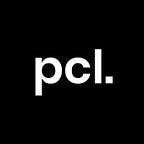COVID-19 ‘Big Leap’: Reactive and Proactive Businesses
Often, companies could cushion themselves and build buffers that portray future-proofing and guaranteed security, but a lot of these companies fail to ward off the effects of disruption. The mantra has always been ‘disrupt or be disrupted’. However, different occurrences through history have helped define disruption based on innovation, war, politics, technology and global viral outbreaks.
The pace of COVID-19 disruption has intensified due to unforeseen lock-downs and extensions. It has evolved from being a dilemma — bringing with it global economic damage running into billions — to triggering concerns around continuity and existence for many businesses. No matter what, some corporate giants will only remain so as needs have changed based on a higher dependence on specific services and technologies. For instance, Zoom Video Communications Inc., according to Bloomberg, was up by 21% in stock value as of March 2020. In the same way, many businesses will be shattered, post-COVID. More so, conversations about rebooting and recovery, as they take higher precedence, may lead to deeper business concerns if they are not (aggressively) on-going and morphing into actions during this time, at least.
Circumstances usually play a pivotal role in the equation of who succeeds or fails during and after an outbreak. Two important responses require attention in disruptive times like this. The first is: in disruptive times, reactive crisis-responses usually give an immediate illusion of control and stability — this is fickle. For example, some organisations will spend more time coordinating risk — mitigation operations and react based on each aspect of business disruptions, such as lapses in communication, threats to an organisation’s network security and other cyber-attacks, and so forth. Concerns like this often set back the pace that is planned for traction and speed after a crisis is resolved.
On the other hand, creative and immediate problem-solving responses bear upon on preemptive thinking. This is exactly what military expeditionary forces do, and if businesses must succeed amidst the global disruption, they must be nimble in every aspect of logic, practice, and engagement. To think about this more extensively, a firm could practice crisis simulation as an ‘automated’ response to (solve) problems that may arise from unpredictable and fast-changing environments. The advantage during these times is realised by leveraging capabilities in the face of competitors rather than sustaining a business that survives just enough to outlast a viral outbreak.
Finally, insights are drawn from some organisations that have made examples of reactive and proactive responses to changing times due to disruption. They have used some of the strategies below to ‘take the fight to the disruptor’ or respond after being disrupted:
1. Pivot and give consumers a different choice: Swatch shifted its paradigm from being a piece of jewellery to a fashion accessory. Accordingly, many organisations are rethinking culture, strategy and product for reemergence post-COVID: reactive
2. Dig deeper and respond based on a new strategy to protect cash cows: An example of this is companies offering synthetic precious stones to clients who are wrapped in the perception of rarity and mystique but cannot afford the cost of mined luxury. Compare Michaels jewellers (who sells synthetic stones through a major white-label brand to distinguish them from natural diamonds in the same collection) with companies like De Beers. While companies like De Beers, Rio Tinto, and other diamond producers have cried ‘foul!’, saying lab diamonds are inauthentic, manufacturers of synthetic diamonds, like Michaels Jewelers, on the other hand, are promoting the environmental benefits of their process, hoping to attract millennials more concerned about ‘green earth’ and saving money1: proactive
3. Wean off current product offering and create value through new competencies: IBM’s move from mainframes to PCs to professional services; companies shifting their production lines to respond to current ‘COVID-19 needs’: reactive
4. Winning all through foresight (as in the case of crisis simulation mentioned above) and reflection. Leveraging big data and analysis to predict, preempt and continuously redefine business logic. According to Yahoo Finance*, in July 2016, Yahoo reached an agreement to sell its Internet properties to Verizon Communications Inc. for 4.83 billion Dollars. Taking a look back at yahoo’s opportunity to buy Google for 1 million Dollars years before, the going price for Yahoo’s asset today could have been in the hundreds of billions of dollars2: reactive
In principle, not every organisation that reacts to crisis fails. However, there is a better leaning toward successful outcomes in disruptive times where organisations respond proactively and align their practices accordingly so that they gain traction and speed immediately, right after a crisis is resolved.
